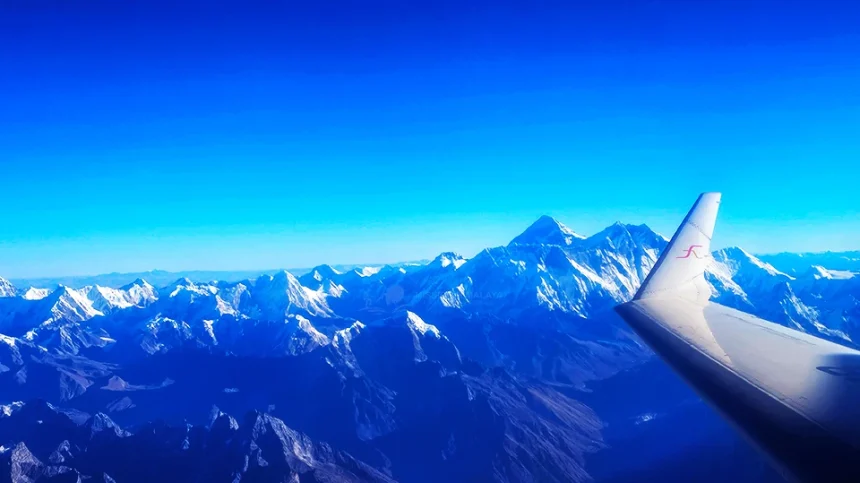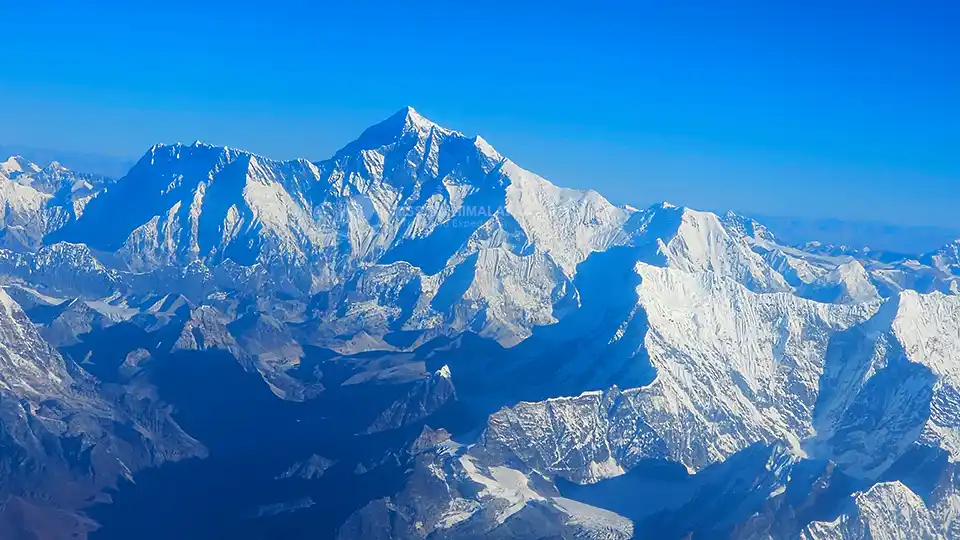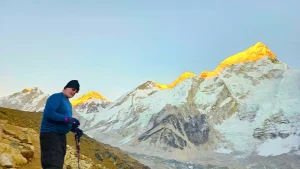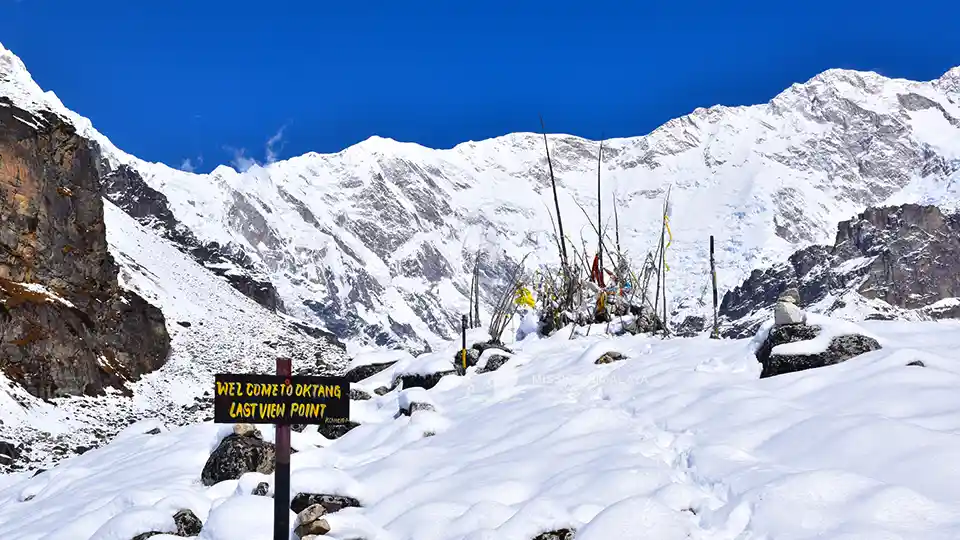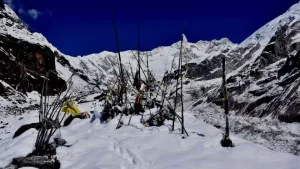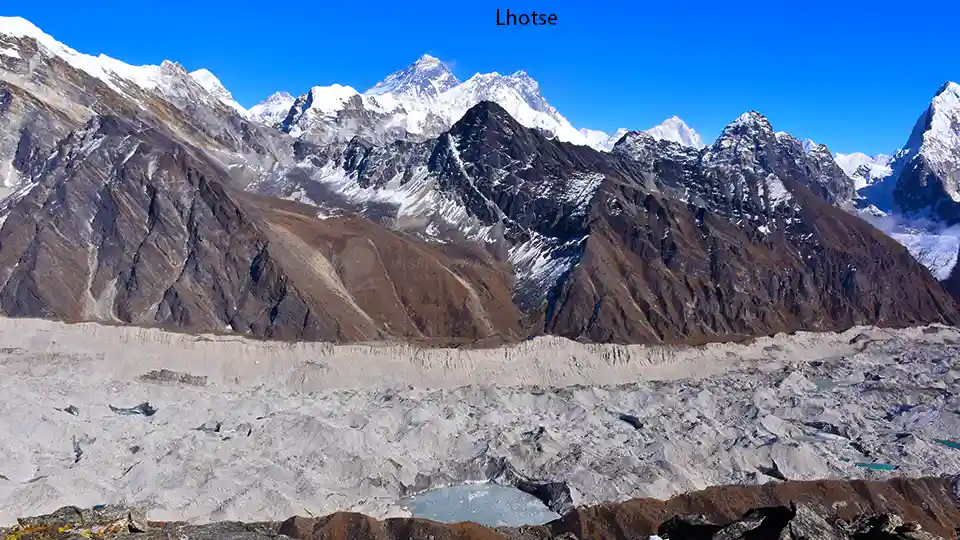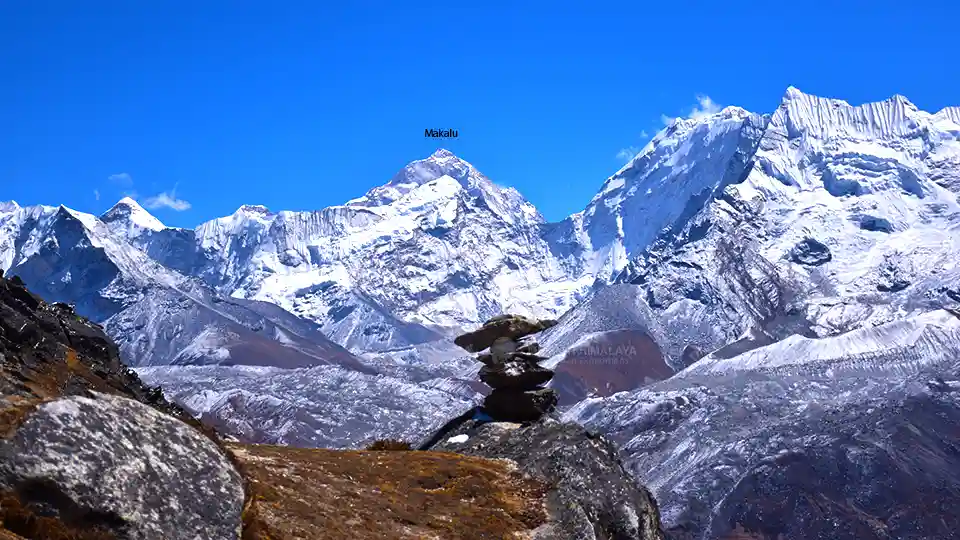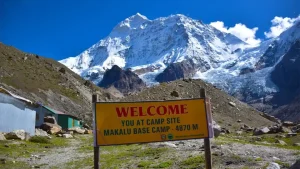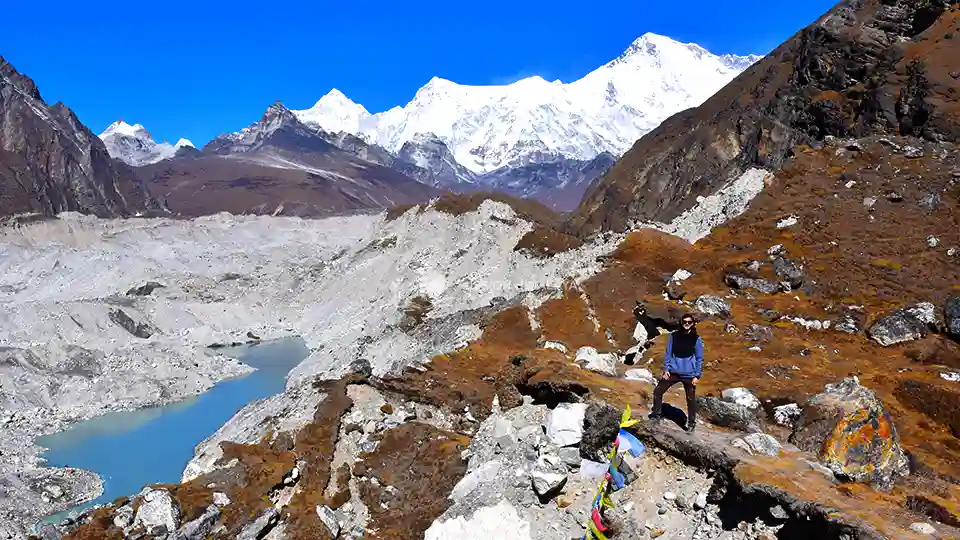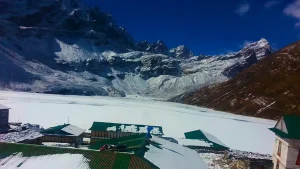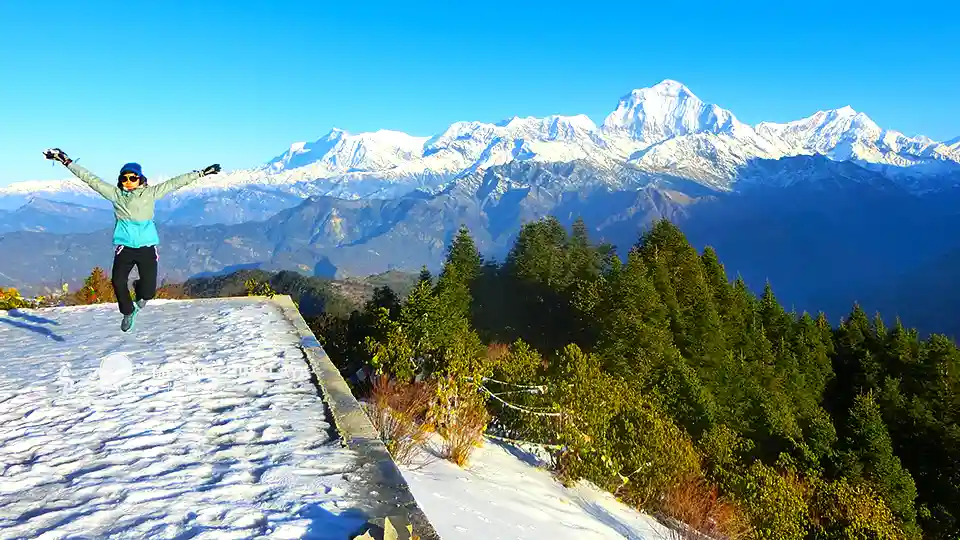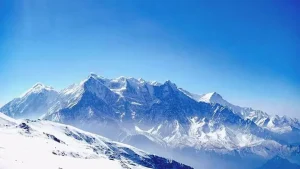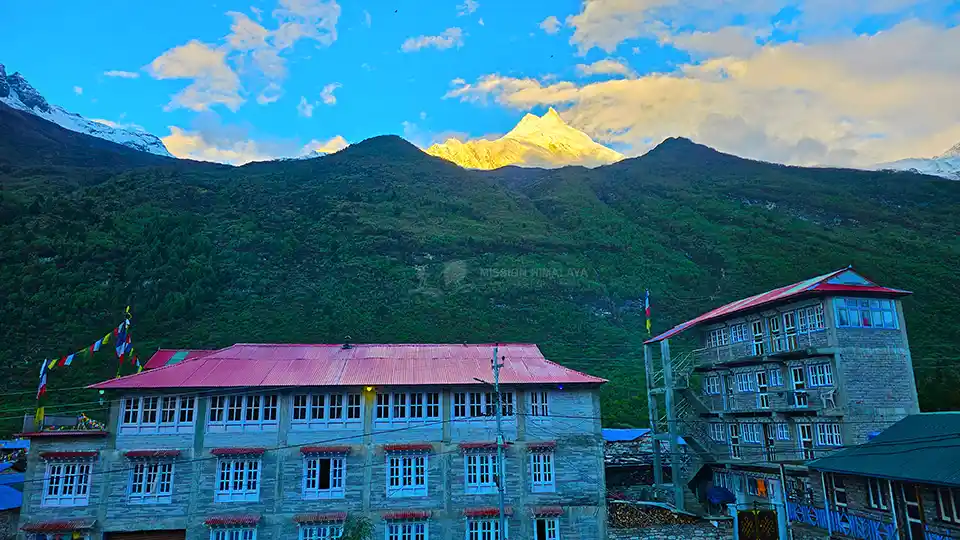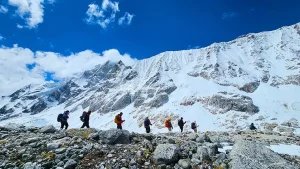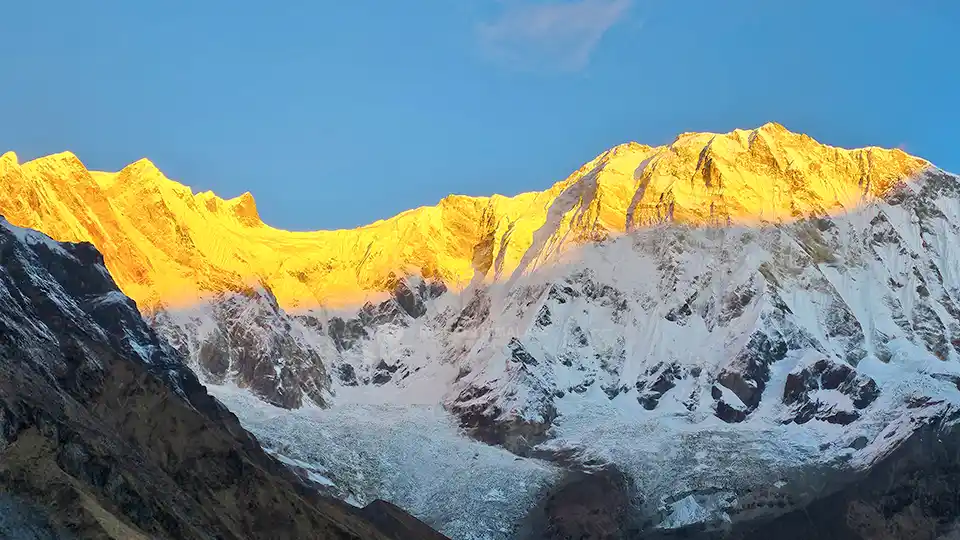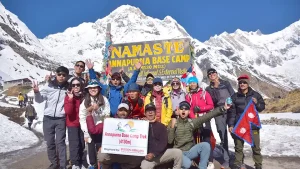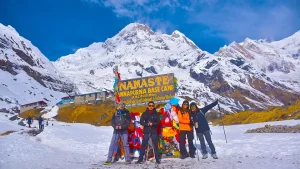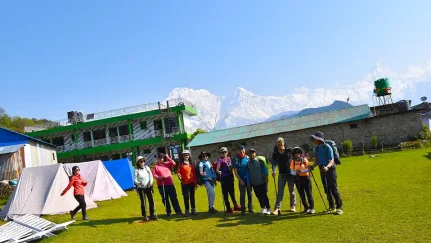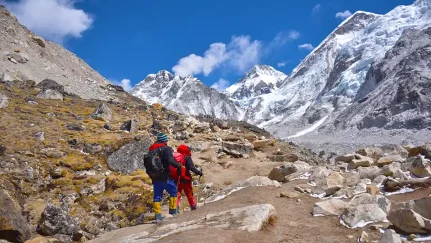Peaks in the Himalayas are home to the tallest peaks in the world, with more than 110 peaks reaching heights of at least 24,000 feet (7,300 meters) above sea level. There are 14 peaks above 8000 meters in the whole world and 8 of them are in the Nepal Himalayas including the top of the world. And an intriguing fact is that they are all well-known and well-liked, with their exquisite appearance. The other seven mountains are Lhotse, Makalu, Cho-Oyu, Manasalu, Dhaulagiri, Annapurna, and Kanchenjunga. All of these peaks are over 8000 meters high. Mount Everest tops the list as the highest peak. Meanwhile, two of them are included among the top three tallest peaks of the Himalayas in the world. Whereas, Kanchenjunga comes in third and Everest at the top.
With 866 mountains in total, this country has extraordinary opportunities for trekking. Mountain climbing in the Himalayas provides a top-notch trekking experience that may be both rewarding and difficult. Depending on the plans, packages, and itinerary we select, we can explore these top mountains in several weeks. Please check out the following lists if you’re seeking plans and packages: Everest base camp trek, Annapurna base camp trek, Manasalu circuit trek, and Kanchenjunga base camp trek.
Table of contents:
- Everest – 8848m (World’s first-highest mountain)
- Kanchenjunga – 8598m( World’s third-highest mountain)
- Lhotse – 8516m (World’s fourth-highest mountain)
- Makalu – 8463m (World’s fifth-highest mountain)
- Cho Oyu – 8201m (World’s sixth-highest mountain)
- Dhaulagiri – 8617m (World’s seventh-highest mountain)
- Manasalu – 8163m (World’s Eight-highest mountain)
- Annapurna I – 8091m (World’s tenth-highest mountain)
- Gaychung Khang – 7952 (World’s fifteenth-highest mountain)
- Annapurna II – 7937m (World’s sixteenth-highest mountain)
1. Everest – 8848m (World’s first-highest mountain)
With an elevation of 8848 meters above sea level, Mount Everest is the tallest peak in the world. Other names for Mount Everest include Chomolungma in Tibetan and Sagarmatha in Nepalese. There are two primary base camps for Mount Everest. One is the North Base Camp in Tibet and the other one is the South Base Camp in Nepal.
- Mount Everest During Mountain Flight
Everest is renowned for its grand landscapes, attractive Sherpa community, Buddhist monasteries, and variety of plants and animals. In 1953, Edmund Hillary and Tenzing Norgay became the first people to reach the peak of Mount Everest. After that for many people, it felt like their fantasy had come true.
Peak climbers frequently participate in expeditions to Mount Everest. It’s a risky venture, though. A lot of previous mountaineering expertise, equipment, and a qualified Nepalese guide are all prerequisites for climbing Everest.
2. Kanchenjunga – 8598m (World’s third-highest mountain)
With an elevation of 8,598 meters, Kanchenjunga is the third-tallest peak in the world. It lies at the boundary between Nepal and Sikkim, some 20 kilometers south of Tibet. It is a part of the Eastern Himalayas. The name Kanchenjunga, which alludes to the stunning mountain views that await, means “five great treasures of snow”. Sikkim and Nepal form the borders of the Kanchenjunga area. It is particularly well-known for its stunning natural beauty. It is a perfect habitat for blue sheep, musk beer, and the dreaded yeti.
- Mount Kanchenjunga-Peaks in Himalayas
Following the initial expedition’s unsuccessful attempt to climb Kanchenjunga in 1905. Joe Brown and George Band of the British Kanchenjunga Expedition were the first to successfully scale this spectacular peak in 1955.
The climb to Kanchenjunga’s peak is difficult and perilous because mountaineers and climbers must be ready for the possibility of avalanches and falling ice. Everyone recommends planning and traveling to Kanchenjunga with experienced climbing guides.
3. Lhotse – 8516m (World’s fourth-highest mountain)
With an elevation of 8,516 meters, Lhotse is the world’s fourth-highest peak which stands on the Tibetan-Nepali border, 3 kilometers south of Everest. The word Lhotse means “South Peak” in the Tibetan language. Despite its varied geographical distribution and climatic circumstances, this region astounds us with a variety of exquisite flora and animals. Rhododendrons flowering in a variety of hues in hills and along the route, as well as other lovely wildflowers, can be seen on the road to Lhotse.
- Lhotse peaks in Himalayas
On May 18, 1956, the Swiss team of Ernst Reiss and Fritz Luchsinger from the Swiss Mount Everest ascended the main summit of Lhotse for the first time.
One of the world’s largest, most spectacular, and steepest mountain faces is Lhotse’s South Face. The most dangerous section of the Lhotse Expedition climbing is known as Khumbu Icefall because the glacier’s structure is constantly changing there. Mountaineers and climbers need to be prepared for challenging, isolated, incredibly rocky, and snowy terrain. However, Technical mountaineering equipment will be needed for the ascent.
4. Makalu – 8463m (World’s fifth-highest mountain)
Located 14 miles to the east of Mount Everest, Makalu is the fifth-highest peak in the world at 8,463 meters above sea level. Basically, It is a lone peak with a four-sided pyramid shape in the Himalayas, 19 kilometers (12 miles) southeast of Mount Everest. You will pass through the deepest Barun valley on your journey to the Mount Makalu adventure. It is home to many different endangered plant and animal species. If you’re lucky enough, you might get the chance to discover different kinds of birds, medicinal plants, species of orchids, species of rhododendrons, and other rare wildlife that are in danger of extinction.
- Makalu-peaks in Himalayas
On May 15, 1955, Lionel Terray and Jean Couzy, members of a French expedition commanded by Jean Franco and G. Magnone, made the first ascent of Mount Makalu.
One of the most technically difficult peaks in the Himalayas is Makalu Expedition. With their subfreezing temperatures, low oxygen levels, and heavy clothes, technical parts will put you to the test. The area is well-known for its steep slopes and razor-sharp ridges. Therefore, utilize fixed ropes, crampons, and axes when climbing.
5. Cho Oyu – 8201m (World’s sixth-highest mountain)
Cho-Oyu is the sixth-highest mountain on Earth with an elevation of 8,201 meters. Tibetan word Cho Oyu, which means “Turquoise Goddess,” is a combination of the words “Chomo” (goddess) and “yu” (turquoise). About 30 kilometers to the west of Mount Everest is Cho Oyu. It is also located on the line separating Tibet and Nepal. The Cho Oyu Expedition is one of the simpler 8,000-meter peaks to climb in the Himalayas. This expedition has no visible threats along the path and is straightforward. Cho Oyu, which is on the border of Nepal and Tibet, is situated about 30 kilometers west of Mount Everest.
- Cho Oyu from Gokyo Lake
The only place where trekking can truly be considered attractive is in a beautiful landscape. The Khumbu region of Nepal is a fantastic paradise for trekkers. Since it has a wide variety of plants and animals, peaks, an amazing culture, and traditions in addition to the magnificent Himalayas.
Austrian Joseph Joechler, Herbert Tichy, and Pasang Dawa Lama made the first ascent of Mount Cho-Oyu on October 19, 1954.
Compared to the other Eight peaks in Himalayas, climbing Cho Oyu is less difficult and dangerous. Eventually, One must be in good physical and mental health to be able to walk the treacherous and snowy route. On successive days, the trek can go up to 8 hours nonstop.
6. Dhaulagiri – 8167m (World’s seventh-highest mountain)
With an elevation of 8,167 meters above sea level, Mount Dhaulagiri ranks as the seventh-highest peak in the world. It rises to its highest point to the east and is located northwest of Pokhara. There are several ways to ascend Mount Dhaulagiri. However, Dhaulagiri Expeditions favor the Northeast Ridge more often than the others.
From Beni Bazaar, the Dhaulagiri expedition sets out. The start of these stunning treks is just a short distance from Pokhara. On the way to the Dhaulagiri Circuit Trek, hikers pass through villages where people live in perfect harmony. As the trail travels through gorgeous towns, woodlands, and yak farms, the frequent, towering views of the lovely mountain.
- Dhaulagiri Peaks in The Himalayas
A Swiss/Austrian expedition led by Kurt Diemberger, Peter Diener, Ernst Forrer, Albin Schelbert, Nyima Dorji, and Nawang Dorji made the first successful ascent of Dhaulagiri in 1960.
The Dhaulagiri peak is far more difficult than most other eight-thousanders of Himalayas in terms of technical difficulty. Generally, Participants in the expedition will experience challenging terrain, brisk winds, and avalanche danger.
7. Manasalu – 8163m (World’s Eighth-highest mountain)
With an elevation of 8,163 meters, Manasalu often referred to as Kutang, is the eighth-highest peak in the world. It is located in Nepal’s west central region, in the Mansiri Himal, a section of the Nepalese Himalayas. The Manaslu Circuit Trek has all one could ask for in a traditional Nepali trek, Breathtaking landscape, gompa and monastery, and lovely villages of Jagat, Samdu, Samagaon, and Dyang. It also includes a stunning hike to Mount Manaslu Base Camp, a traverse of the Himalayan mountains that rises to 17,000 feet (5,100 meters), and close contact with locals and their prehistoric culture.
- Mt. Manaslu peaks in Himalayas
Imanishi (Japan) and Gyalzen Norbu (Sherpa) led the first successful Manasalu expedition, which took place in 1956.
Generally, the expedition to Manasalu involves some long hikes and climbs. However, It can take up to eight hours each day to complete a single climb or expedition. Manasalu is one of the easier 8,000-meter peaks. Although, it is very important to use caution when traveling at high altitudes. The terrain on this trip is rocky and ice, thus technical mountaineering equipment is necessary.
8. Annapurna I – 8091m (World’s Tenth-highest mountain)
At 8091 meters, Mount Annapurna I is the tenth-highest mountain in the world. Annapurna I is located to the east of the gorge of the Kali Gandaki. It is traversed by the Kali Gandaki River. Meanwhile, the Hindu goddess of food and nourishment, Annapurna, who is thought to live there, inspired the mountain’s name. Accordingly, the Annapurna Base Camp trip passes through several distinctive towns like Ghorepani, Chhomrong, and Tadapani. You will witness the region’s natural beauty and discover the true culture and way of life of its residents. Meanwhile, some indigenous groups that live on the way to camp include the Gurung, Magar, Thakali, and Loba. Accordingly, the terrace, flowing countryside, and rich rhododendron and pine woodland will all increase your feelings of joy.
- Mt. Annapurna 1 From ABC
Annapurna became the first eight-thousand-meter peak to be successfully climbed when French mountaineers Maurice Herzog and Louis Lachenal reached the summit.
Mount Annapurna ascent I is risky since the Annapurna climbing cliff is a technical ascent. Mount Annapurna ascent I is risky since the Annapurna climbing cliff is a technical ascent. Mountaineers and climbers must contend with the mountain’s great elevation, cliffs, slick terrain, icy cliffs, and climate while ascending it.
9. Gyachung Khang – 7952m (World’s Fifteenth-highest mountain)
Gyachung Khang is a peak in Nepal’s Khumbu area that is 7,952 meters above sea level. After the eight-thousanders of the Himalayas, it is the highest peak on Earth, also ranks among the top fifteen peaks in the world. Furthermore, we may say that Gyachung Kang is a notable mountain in the Mahalangur Himal range of the Himalayas and is situated in the Sagarmatha National Park in the Gokyo area of Nepal. Accordingly, this trek passes from Namche to Khumjung, where you can enjoy stunning mountain vistas. The hiking trail bestows upon you a bounty of flowers, lovely woodlands, and views of Khumbila and Twachee. Accordingly, you will also pass through the Gokyo valley where you will capture the miraculous surrounding of Gokyo lake.
Japanese expedition team achieved the first successful ascent of Gyachung Kang on April 10 of 1964. A successful ascent was made by four climbers, including Y. Kato, K. Sakaizawa, Pasang Phutar, K. Machida, and K. Yasuhisa the next day.
It features two peaks that are separated by a narrow trough. The tallest peak is on the western side, and both peaks have extensive glaciation. For this peak, climbers choose the southeast ridge on the Nepal-China border because the peak’s north face is more difficult. Compared to other peaks, this one takes fewer technical skills to climb.
10. Annapurna II – 7937m (World’s Sixteenth-highest mountain)
The Annapurna Himalayan Range’s second-highest mountain, after Annapurna I, is Annapurna II. It is a peak that you’ll spend a lot of time with if you travel around the Annapurnas in the area near Manang. The Gandaki River, which formed one of the world’s deepest river canyons, is directly east of the second Annapurna mountain, which is situated on a 45.3-kilometer-long ridge. An amazing view of the Annapurna mountain range, including Machhapuchre, Lamjung Himal, Nilgiri, Dhaulagiri, Tukuche Peak, and Manasalu Peaks, may be had from this second Annapurna summit. Nothing higher nearby compares to the summit of Annapurna, which is truly eye-catching with its breathtaking 360-degree panorama.
A British, Indian, and Nepalese team commanded by J. O. M. Roberts made the first ascent of it in 1960 from the North and the West Ridge. Richard Grant, Chris Bonington, and Sherpa Ang Nyima made up the summit party.
Large avalanches, particularly those coming from the thick snowpack behind the North-central ridge, are characteristic of Annapurna II. Rockfall, substantial ice overhangs, and frequent storms are additional risks. When it comes to peak climbing, the locals in the Annapurna are not as interested in climbing, which makes it difficult to get human assistance and support in times of need, such as medical emergencies. Without a doubt, the climbing portion is challenging, but it becomes even more dangerous due to the numerous risks—both geographical and climatic—that the climber must avoid.
You May Intrested
10 Facts about the Himalayas:
- India and Tibet collided to create the peaks in the Himalayas as a result of tectonic plate movements.
- The range acted as a natural barrier for tens of thousands of years, preventing early contact between the inhabitants of India, China, and Mongolia.
- Sir Andrew Waugh gave Mount Everest its name in 1865 to pay homage to Sir George Everest. He served as Surveyor General of India from 1830 to 1843.
- The Himalayas are the youngest mountain ranges in the world although it is only about 70 million years old.
- The Himalayas, home to 15,000 glaciers and 600 billion tonnes of ice, support 1.65 billion people, or 20% of the world’s population, by providing water to Major rivers.
- Peak Kailash, located in the Himalayas, is a sacred site for four different religious traditions: Tibetan Buddhism, Hinduism, Jainism, and Bőn.
- There are also rumors that the mythological Yeti lives in the Himalayas.
- The Sanskrit word “Himalayas,” which refers to this mountain range, means “abode of snow.”. This reflects the fact that its peaks are continually capped in snow.
- Some of the rarest wild animal species, including musk deer, mountain goats, wild goats, snow leopards, red pandas, and the Himalayan tahr, can be found in the Himalayas.
- The Himalayas serve as a foundation for some of the most unusual plant and animal species in the world.
Peaks in Himalayas Conclusion
The exciting fact about the peaks in the Himalayas is they are all well-known and well-liked throughout the globe. Undoubtedly, the top of the world Everest, is the main charm of the Himalayas which represents all of the other mountains. As we go through the summits of these peaks then all of them have been conquered previously by the daring climbers, they have left a remarkable footprint in those mountains which we should respect wholeheartedly. All of the top listed mountains here have their own shape, attractiveness, and pathway which makes it unique and distinguishable from each other. So, you probably must be excited and thrilled to be exposed to the adventure of the Himalayas and get past through it.

